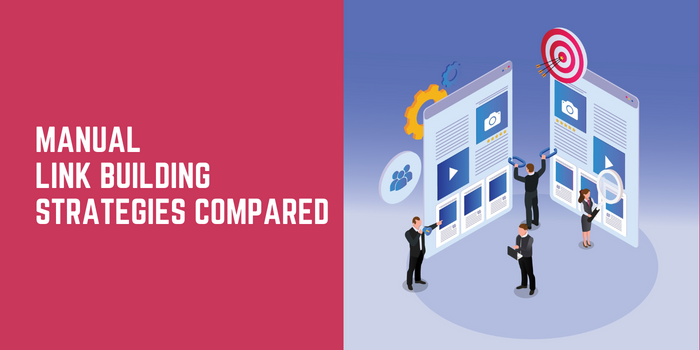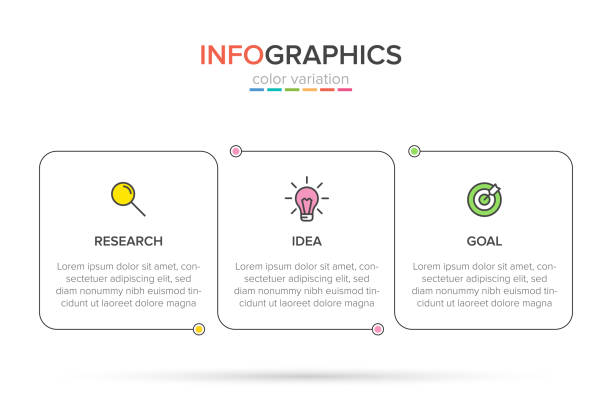
“It’s all about creating backlinks!” You’ve likely heard about backlinks if you have stumbled upon search engine optimization. Besides, SEO marketers and strategists sing the praises of creating backlinks, all intending to improve SEO and drive more traffic to the parent website. And, since search engine optimization comprises more than just building links and relationships, backlinks are still fundamental. That said, producing high-quality links to your site is easier said than done.
On the flip side, link building has been dormant for years for users who have failed to keep up with the ever-changing algorithms and increased needs for tools, skills, perseverance, and details. Consequently, it’s pivotal to recognize and acknowledge the evergreen rules of link building. But, if you haven’t, comprehend Cemper’s Golden Link Building Rules before you step into the world of SEO and white hats.
Having said that, there has been a lot of talk concerning outbound links as a significant ranking factor. Several users have emphasized content and on-page procedures, neglecting the significance of building links quoting, ‘we understand how links work.’ However, do you know everything about links and how to build them manually? Let’s find out in the rundown.
‘Google confirms that links are essential’
Google has confirmed that links play a pivotal role in determining your site’s ranking. Optimizing the product without any outbound links is challenging. Besides, why would you consider ranking a specific page without any links? Google does care about the number of links produced, and so should you.
Wait, there’s more! Even Google Penguin has transformed the way backlinks are used in SEO. It would only be fair to say that SEO will never be the same with such an update. However, with new updates arrive new opportunities. Before April 2012, users would seamlessly buy their ranking positions by adding permanent links. With some of these and some of those links, one could easily manage to rank on the first page of the search results. That era is prehistoric. The Penguin Spam Filter is one of the significant parts of Google’s core and functions in real-time.
Links are more of a connection
A hyperlink is a relationship shared by the referring and target page – always has been. For an extended period, search engine optimizations have consumed the page rank, and various other metrics associated with link building. In the modern age, where link development is referred to as state of the art, it’s growing proficiently.
Why spend your valuable resources on backlinks that would derail your SEO journey anyway? But did you know it’s possible to mitigate the risks of backlink relationships before building them?
State of the Art Link Development
Today, link building has significantly grown into a professional convention. Why spend multiple resources on links that would harm you down the road?
Did you know that it is possible to simulate the impact and risk of a backlink relationship before you built it? Experts recommend that websites weed the product from the chaff are more likely to invest 3x resources on the 15% excellent links that matter instead of heading in bulk.
But what does a backlink imply?
Regarding backlinks, the spotlight is on a reference from an ‘x’ webpage to your webpage. If you think it’s similar to outgoing or outbound links, they aren’t. It would be ideal not to get confused between the two. A backlink is an inbound link that determines the significance of your website for various search engines.
Image Source: https://www.istockphoto.com/photo/important-concepts-for-search-engine-optimization-gm1410025165-460367965?phrase=backlink
As already discussed, content sections without links are just scattering words yet to witness the daylight. Link-building activities are crucial because of the following reasons:
- Google’s foremost ranking factor
- Links are what make a WEB
- Links address quality content that needs to rank
- Links possess and redirect power
- Links possess and redirect trust
- Google promotes the idea of backlinks
What are Google’s regulations for link building?
Not every link is equal in terms of power, authority, and trust. A user must be vigilant enough before initiating any link-building campaign. Consider building links for your organization and clients, make them purposeful and equate them with quality content. Furthermore, ensure that every inbound link is natural and that search engines do not conclude that people are manipulating their search algorithms.
A link that intends to manipulate the website’s ranking in search results might be subjected to a violation of penalties. Since this goes deep against the Webmaster Guidelines, a user must tread cautiously.
Despite the fact that adequate link building is not so straightforward, several manual link-building strategies exist that can get you started without significant efforts or budgets. The rundown explores some of them.
1. Manual Outreach
As we often find, some of the effective strategies can consume a considerable amount of effort. Manual outreach might seem like a drag in an age where automation is the par for the course. However, that’s not the case. It is entirely worth your time.
- You have elementary control over who links back to you.
- There are multiple strategies you can implement.
- It allows you to obtain backlinks from quality and trusted domains.
- It’s much quicker than natural backlinks.
But how does such a process work? Initially, it would be best if you made certain that there’s ample content available on your website or blog. Recommendations suggest a website should have a minimum of 5-10 blogs/articles before connecting admins.
2. Medium, Quora, & Reddit Link-Building
Google has been pretty ambiguous about producing no-follow backlinks on trusted industry websites. Don’t throw yourself up yet and shout ‘no-follow links.’ Many search engine optimization professionals follow a comprehensive scheme to put links and redirect traffic from various platforms to theirs. It simply implies that a user must actively stick to a specific content strategy on Medium, Quora, Reddit, and other review platforms.
3. Create Infographics
In recent years, the trend has shifted from obtaining traditional backlinks to integrating new ways to build them. Many modern-day experts have experimented with creative infographics in recent times. Another point that has begged for explanation is the workability of 2000-3000-word articles. An intricate infographic can translate technical information through seamless visuals, helping you to scale up the link-building process. But how do creating infographics help a link-building campaign?
A quality infographic through backlink building procedure must be supplemented with an email marketing strategy. For such a process to flow flawlessly, a user should identify publishers creating content on similar platforms. Once you’ve shortlisted them, it’s time to request them to utilize infographics by providing you with a backlink.
4. Build relationships
The prerequisite of performing link building is forming good relationships. And, if you’re a bit clueless, plenty of opportunities exist. One must begin with niche-centric communities: blogs, forums, and social groups like Webmarketer, for instance. Take the initial step and start pitching in relevant posts and comments, offering contextual value against every discussion.
By continuously participating in such online communities, you’ll obtain authoritative backlinks and have unlimited access to updated industry news. Moreover, you can connect to exciting individuals sharing the same passion.
5. Give a testimonial
Testimonial link-building is one of the win-win scenarios for any SEO specialist. Several organizations provide you with the chance to quote some words about your experience utilizing their products and services. Having said that, it’s an ideal way to build client trust and credibility. In addition, it’s an excellent opportunity to get potential traffic and backlink from the respective site. There’s more – such a link possesses a significant approval rate compared to a regular link request email.
While businesses receive a testimonial to upload on their website, you get an authoritative backlink.
6. Start a blog
As conventional as it may seem, your own blog can never be underestimated. Besides, a blog works wonders when numerous types and forms of content sections are housed on it. However, if there’s one blog and a single backlink redirecting your website, you might have already created a risky link. Ask any SEO veteran, and they’d suggest you keep your blog up and running at all costs.
As a result, consider publishing posts regularly. Moreover, focus on the industry and what a client requires. And, in time, it’ll gain momentum and achieve considerable authority on the web. Furthermore, ensure the content is relevant, well-defined, and valuable to viewers and readers. It’s the only way of making everyone link to it. And, if you’re still confused, this is how you produce excellent backlinks; you earn them.
7. Link Reclamation
As the name suggests, link reclamation is reclaiming a link that already holds content associated with your product, brand, or service. To reclaim the link, connect with the author or owner of the website and request to credit your mentions with specific links. Commercial brands, primarily enterprises, could benefit from such a link-building process.
The more a site reclaims popularity, the more bloggers, authors, and publishers will endorse your name through their content pieces. To begin with, use various SEO tools like Ahrefs to shoot email alerts whenever you get a new brand mention. Finding it hard to set up? Pick a relevant keyword and set up an alert against it. Ensure the keyword only refers to your brand. Or else, you must filter online mentions that only talk about your site. Consider sending emails to website owners and requesting them to credit your brand or service with links. Remember, a humble email pitch works best as they’re familiar with your site.
8. Write a good guest post
Looking to create a stir in the online world with your guest post? In that case, several blogs and websites promote guest submissions. However, there are a few protocols you must adhere to prior to approaching any site. Some of them are mentioned below:
- The site must be relevant to your niche
- A content piece shouldn’t discuss how great your business is.
- Lay focus on quality and emphasize engagement.
- Don’t submit a substandard article, as it can lead to ranking desecration.
Image Source: https://www.istockphoto.com/photo/content-blackboard-gm527841139-53350116?phrase=backlink
It’s pivotal to build backlinks that can assist your company site, not those that could adversely impact the SERPs. Having said that, some tools are well-designed and user-specific, evaluating the trust and power of a specific domain. So, why not use them? New introductions will only make your job a bit easier.
9. Acknowledge competitors’ common backlinks
The turn of 2022 hasn’t been seamless for the web veterans. The new algorithms have made the SERPs more complex and trickier. As a consequence, introducing professional tools can help significantly. Studying competitors will allow you to observe plenty of common backlinks that your website doesn’t. So, if they got their hands on them, what’s stopping you? All one has to do is determine and try to obtain those backlinks with the help of various Backlink tools on the internet.
10. Referential Content Asset
While experts would boast about the best manual link-building strategies, a passive way to obtain links can be performed through referential keywords. Users use phrases searching for resources to cite in their content. Note that this is done during the writing phase.
Some examples comprise phrases with ‘stats,’ ‘templates,’ ‘tools,’ or query-like searches like ‘how to sell products in (year).’ Suppose you draft a content piece that pirouettes research papers or specific studies. In such a case, other online publishers and creators will more likely reference it. It simply implies that as a website ranks for these keywords and when people acknowledge its usefulness, you obtain new links from their websites or blogs. As a result, consider adding referential content assets to the list of your manual link-building strategies.
While you produce links through manual promotions, you simultaneously acquire passive links against your content.
11. Image Library Linkbait
Image Source: https://www.istockphoto.com/photo/video-archives-concept-gm1032516536-276549598?phrase=image%20library
Are you familiar with how a linkbait functions in image libraries? These are image collections that can’t be accessed from a pile of quality stocks on the web. Meanwhile, non-stock libraries have a relatively high demand. This is due to publishers’ dire need to make their posts stick out. So, if your company staff has captured a few photos recently or you’re into photography, consider creating a worthwhile image library on your online space.
This can offer exclusivity to publishers working in the same niche. Additionally, while other publishers utilize and credit your images through published content, users will have first-hand experience with visuals they haven’t seen before.
12. Recover dead backlinks
At times, you’ll run into broken links. This could be because of the changed location of a specific page or a webmaster misspelling your website link. If this persists, the backlink will return a 404 error. These problems might also happen after a website is migrated or re-launched to other domains. In such a case, redirect all the 404 error backlinks to other pages.
Besides, utilizing the services of a recovery tool can assist in finding backlinks that the website has, links that redirect to non-existent pages with code-404 errors. Once you have your hands on the list of such links, generate .htaccess codes that can seamlessly insert into the .htaccess files.
In other words, it’s fundamental to distinguish between bad and good link-building strategies. It will offer you an apparent picture of how to produce quality backlinks and keep your distance from bad ones. In the end, it’s all about relevancy, authenticity, credibility, quality, and user focus.
What’s Good Link Building?
- Corresponding Linking – While a user does not overdo the corresponding linking or make sense of the topic, link exchange is not considered a bad approach.
- Article marketing – It’s ideal for any company to achieve acknowledgment from external parties and publishers. However, that only works if the links are created naturally. Utilizing navigational phrases and brand anchor texts is a suitable way to avoid keyword stuffing.
- Directory Links – A good directory link should offer valuable insight to a target client. Remember, the key here is to produce relevancy.
- Purchasing Backlinks – Instead of purchasing backlinks, consider investing in creating quality content and promoting the website through methods that attract natural links.
What’s Bad Link Building?
- Excessive Link Exchange – While you exchange links with partner pages, such a practice shouldn’t be performed in abundance. This can impact the overall rank of a website on SERPs.
- Article Marketing – Do not over-optimize your keywords distributed throughout the web. For example, there are several protein supplements available around me. And, if you wish to pick one, you might also want to have a look at specific equipment as your regime catalyst.
- Directory Links – Adding a website to web directories to obtain backlinks will adversely affect your site ranking. While optimizing, you must pay heed to substandard directories that violate Google’s protocols.
- Purchasing Backlinks – If you’re well-versed by Google’s guidelines, you’d know that buying backlinks is a clear violation. Since links are votes of trust and authority, paying for votes is unethical.
Final Thoughts
Suppose you’re a business owner or marketer. In that case, it’s with complete assurance that you’ve asked yourself, ‘How to manually build backlinks to earn more organic traffic and increase visibility?’ Having said that, link-building is quite complex unless you begin to enrich knowledge and practice specific tactics with proven efficacy and efficiency. Moreover, while link-building methods continue to transform, users must be prepared to introduce the best life practices and adhere to constant learning.
Now that you’re packed with the 12 most practical manual link-building tips, it’s your turn to exemplify how they perform. Take the challenge and integrate these approaches into your link-building journey.

About the author: Vibhav Gaur, Business Head
Vibhav Gaur leads strategic operations and business growth at the organization. With a strong background in digital transformation and customer-focused solutions, he has helped numerous clients streamline their web presence and scale efficiently. His leadership ensures seamless execution across teams, with a commitment to delivering results and fostering innovation in every project.





